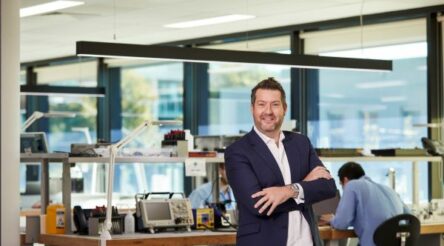Celebrating Australian sovereign capability – challenges and solutions by Graeme Sheather

As our Celebrating Australian sovereign capability editorial series comes to a close, Graeme Sheather looks at the big picture, where we stand today and the challenges and solutions ahead.
A new global order is emerging and it is imperative that Australian manufacturing businesses and government get their act together to create advanced high-tech products and services that compete in global marketplaces.
The question is, does Australia have the political courage and intellectual policy nous to deal itself in?
After decades of local procurement policies, why isn’t Australia a national leader in the export of, for example, smart mining tech? In fact, why are we global laggards.
As for the winners, they’re easy to find. Dense concentrations of industrial SMEs, from Middlestadt in Germany form the backbone of Europe’s competitiveness and massive, high valued-added manufacturing exports.
Alas, Australia currently ranks 25th out of 132 countries in innovation, according to the Global Innovation Index 2022. Australia also ranks 91st of 133 countries in Harvard’s Atlas of Economic Complexity, 2022.
A major problem for Australian manufacturing businesses is their difficulty to shift from traditional legacy manufacturing systems to invest in smart, advanced technology-based operations, thus providing a competitive advantage in global marketplaces.
If Australia’s manufacturing enterprises are to become agile, flexible and scalable examples of the ‘Factories of the Future’, they must make this transition now.
According to Treasurer Jim Chalmers, in his article on ‘Capitalism after the crises’ (The Monthly, Feb 2023), we can maximise our advantages by focusing on three things. First, an orderly energy and climate transition. Second, a more resilient and adaptable economy. And third, an economy that puts growth equality and opportunity at its centre.
Underpinning these three objectives there is an essential fourth: that the government introduce an industry development policy that enables Australian businesses, especially SMEs, to export and compete successfully in a global market.
The Federal Government’s industry policy has gaps in its National Reconstruction Fund and related project items. As the NRF is not in itself an industrial policy, only a financing mechanism, a model must be devised to guide Australian OEMs and SMEs in their transition to advanced manufacturing businesses.
They will need to collaborate across industry sectors and multi-tier supply chains to build advanced manufacturing capacity, creating joint ventures to rebuild GDP levels and grow jobs and services to global customers.
So, what does a collaboration model look like?
An operational toolkit already exists to facilitate this crucial industrial transition. Winning Collaborations, developed by Sydney-based Rodin Genoff & Associates, has a proven networking and clustering methodology that’s been applied across joint venture partnerships created by OEMs and SMEs in Denmark and Sweden.
It details the key elements companies need to address in their path towards improved innovation, including new markets, new customers, competitors, products and services, technology, skill sets, regulations, energy and environmental pressures.
The key strategic drivers are co-investment and collaboration between businesses, which are just as important as co-investment.
As Chalmers also makes clear, the private sector is central to sustainable growth in new product development. Currently, Australian industry fails to convert raw materials into high-tech, value-add products and finished goods, as do its European competitor industries. This transition is a key future objective if we are to become globally competitive.
These drivers must address artificial intelligence in design and control algorithms in the Internet of Things – human interfaces with robotic systems, and utilisation of hyper-computer systems to increase size, their efficiency and scale options.
We already have a transition road map. It was developed in Australia and has been embraced by leading global innovation countries. Maybe it’s time we stop exporting our best ideas and put them to work in Australia.
Picture: Rodin Genoff & Associates
Graeme Sheather is a former Professor and Head of Manufacturing Management at the University of Technology Sydney. Graeme is an expert in the field of manufacturing best practice and Principal Manufacturing Management, Rodin Genoff & Associates, Sydney Australia. Graeme and Rodin Genoff have co-authored three books on industry cluster and ecosystem mapping, and been commissioned by governments in Australia, Denmark and Sweden’s Regional Banking Association. He has advised leading manufacturing CEOs around Australia on technology, innovation and, most recently, on virtual technologies that are transforming industrial design and production.
@AuManufacturing’s editorial series – Celebrating Australian sovereign capability – is brought to you with the support of Nova Systems and Titomic.
@aumanufacturing Sections
Analysis and Commentary Awards Defence Manufacturing News Podcast Technology Videos












